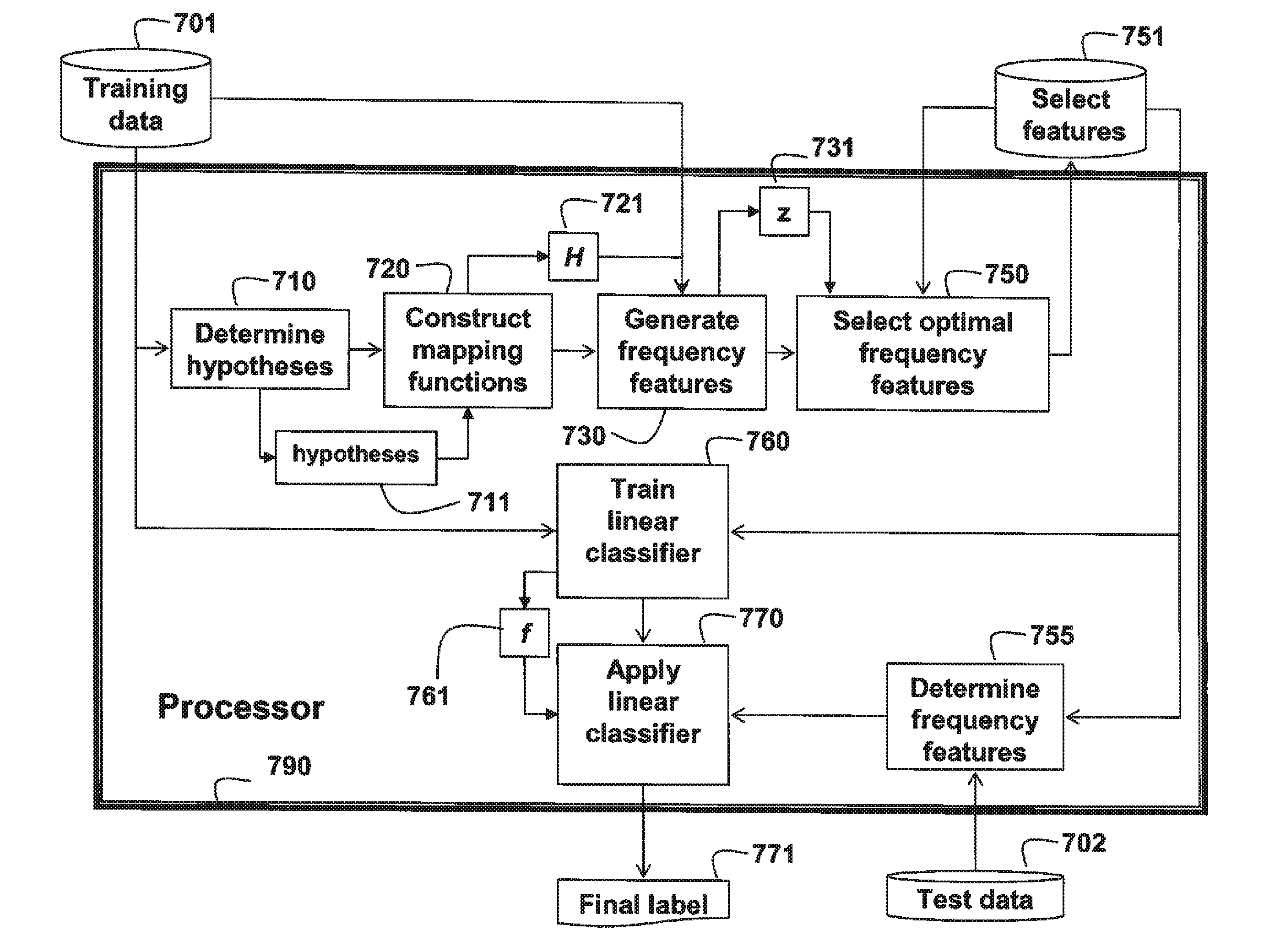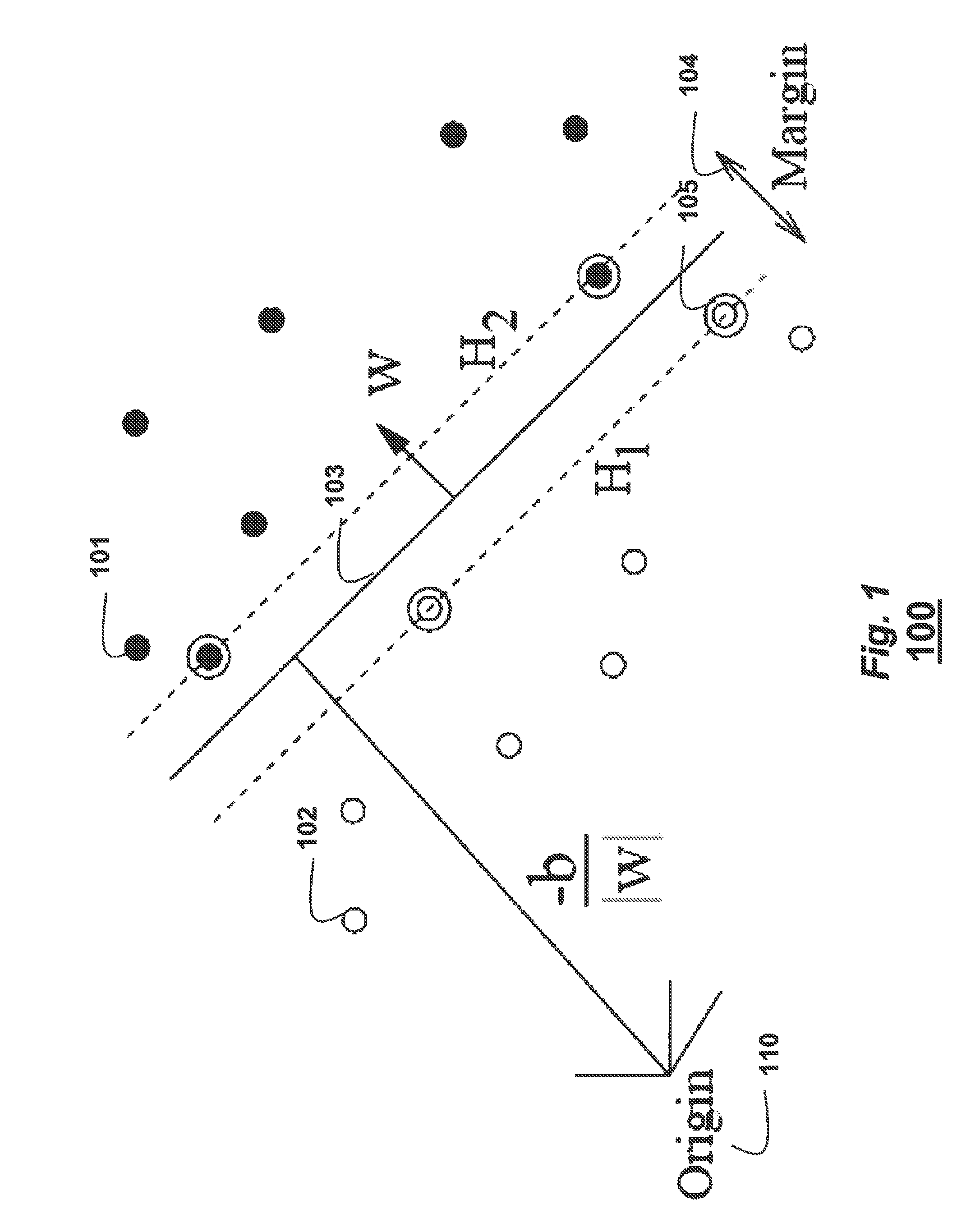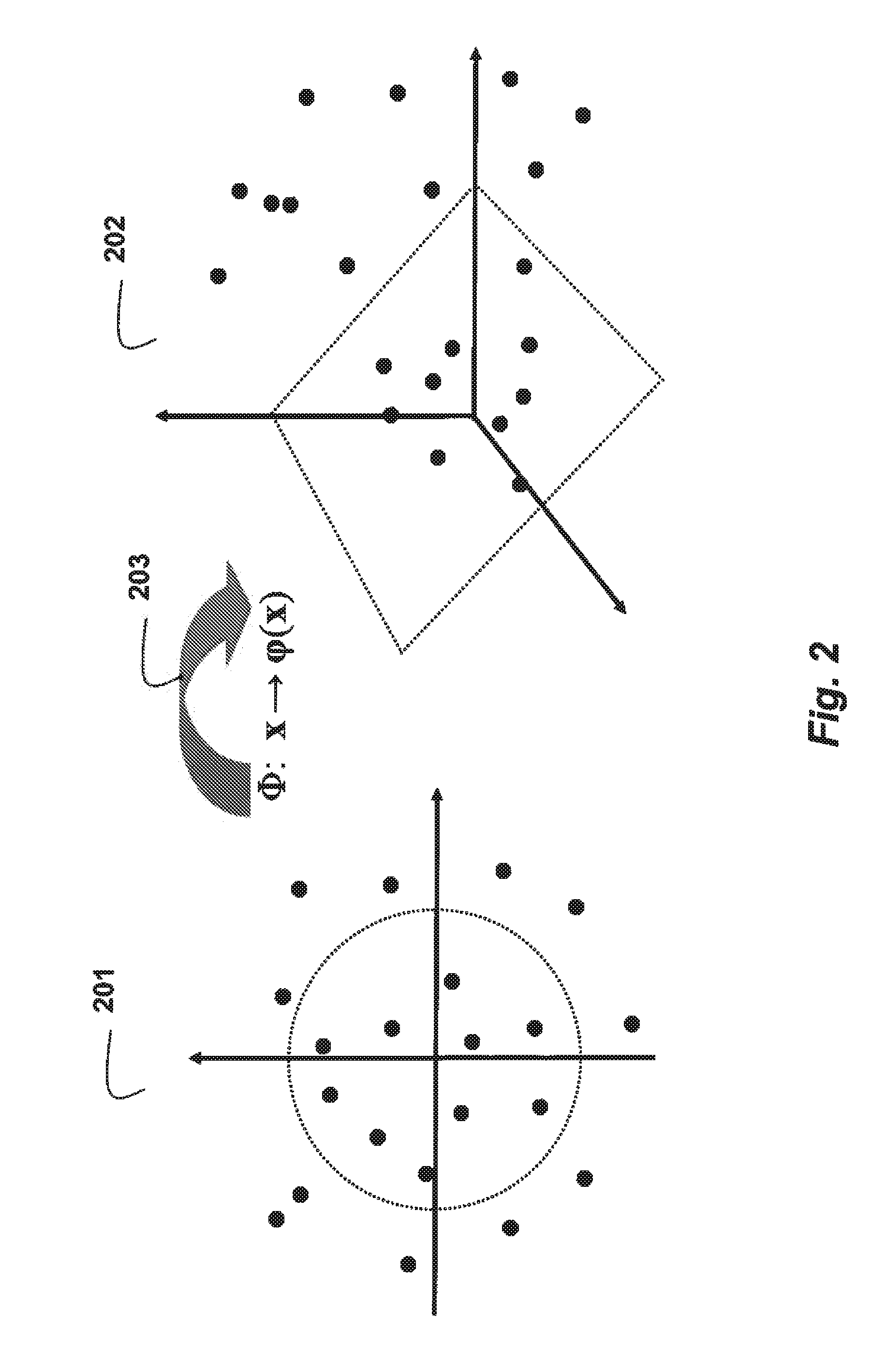Data Driven Frequency Mapping for Kernels Used in Support Vector Machines
a support vector machine and data-driven technology, applied in the field of classification data, can solve the problems of prohibitively slow nonlinear svm integration into a real application, inability to use data priors, and inability to scale well with nonlinear kernels. achieve the effect of reducing computational load
- Summary
- Abstract
- Description
- Claims
- Application Information
AI Technical Summary
Benefits of technology
Problems solved by technology
Method used
Image
Examples
Embodiment Construction
[0025]Support Vector Machine (SVM)
[0026]FIG. 1 shows the basic concepts of a support vector machine (SVM) 100 used by embodiments of our invention. Data to be classified into two classes are shown by black circles 101 and white circles 102, with respect to an origin 110. A hyperplane 103 constructed from training data separates the two classes. The hyperplane is supported by support vectors 105. The amount of separation between hyperplanes H1 and H2 is a margin 104, and W is a vector normal to the hyperplane.
[0027]Given training data xi and corresponding labels yi where xiεRd and yiε{−1, +1}, a training procedure constructs a decision function, which determines the class of unknown data. The decision function can define a linear or nonlinear boundary depending on the structure of the training data. If an optimum separation is through a linear function of the data, then we use a linear kernel, and if not, we use a nonlinear kernel.
[0028]The training data are separable if there exist ...
PUM
 Login to View More
Login to View More Abstract
Description
Claims
Application Information
 Login to View More
Login to View More - R&D
- Intellectual Property
- Life Sciences
- Materials
- Tech Scout
- Unparalleled Data Quality
- Higher Quality Content
- 60% Fewer Hallucinations
Browse by: Latest US Patents, China's latest patents, Technical Efficacy Thesaurus, Application Domain, Technology Topic, Popular Technical Reports.
© 2025 PatSnap. All rights reserved.Legal|Privacy policy|Modern Slavery Act Transparency Statement|Sitemap|About US| Contact US: help@patsnap.com



